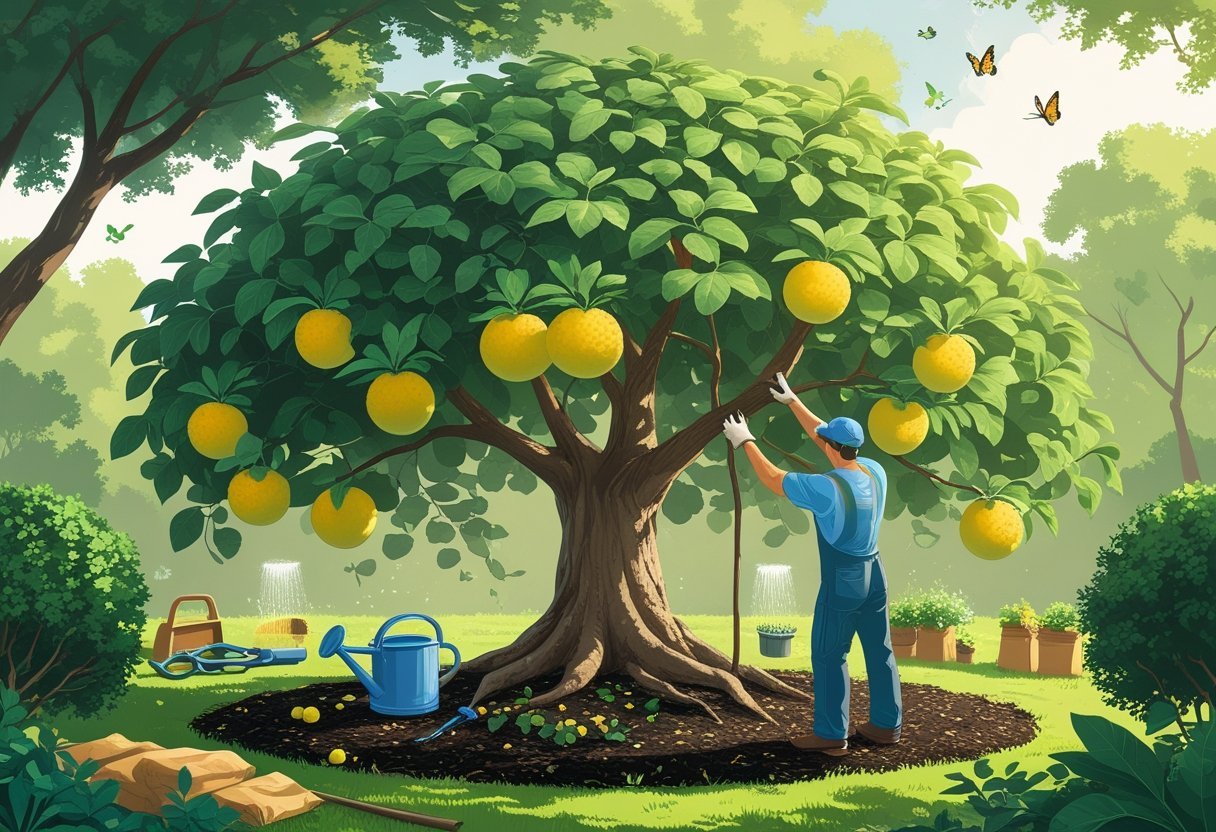The cannonball tree (Couroupita guianensis) is a real showstopper in the garden—those massive, round fruits and sweet-scented flowers are hard to miss. If you want one to really thrive, you’ll need to pay attention to its preferences: think warmth, humidity, and soil that drains well. Oh, and give it plenty of elbow room. These roots don’t mess around.
Regular pruning and a bit of TLC go a long way with this tree. Cold snaps? Not its friend. And if you’re hoping for loads of those wild-looking flowers and fruits, it helps to know that bats and bees play a big part in pollination. Put in the effort, and you’ll have a real conversation piece in your tropical or subtropical landscape.
Key Takeways
- Loves warm, humid climates and soil that doesn’t get soggy.
- Pruning keeps it looking and feeling good.
- Needs room to stretch both above and below ground.
Optimal Growing Conditions for Cannonball Trees
If you want your cannonball tree to be happy, try to mimic its rainforest roots as best you can. That means thinking carefully about temperature, soil, sunlight, and—honestly—a lot of space.
Preferred Climate and Hardiness Zones
This tree hails from the rainforests of Central and South America, so it’s no surprise it likes things hot and sticky. USDA Zones 10 to 12 are its sweet spot. Anything colder than about 50°F (10°C) and you’ll start seeing problems—growth slows, leaves might drop, and in a bad frost, it can really suffer.
Rainfall matters, but don’t drown it. It likes steady moisture, not swampy feet. If your climate is humid and warm most of the year, you’re pretty much set.
Soil Requirements and Preparation
Cannonball trees do best in soil that drains well and leans a bit acidic—think pH 5.5 to 6.5. Heavy clay or spots that stay soggy? Not ideal, since root rot can sneak up fast.
Before planting, dig things up a bit and toss in some compost or well-rotted manure. This helps keep the soil loose and full of good stuff. Just keep things moist but not soaked, and you’ll give those big roots a good start.
Sunlight and Spacing Needs
These trees are sun lovers—give them at least 6 to 8 hours of direct light, especially during the main part of the day. That’s how you get those bold flowers and fruits.
And don’t cram them in. They can shoot up to 40 feet tall and need at least 20 feet of space from other trees or buildings. Good spacing keeps air moving and helps cut down on disease, too.
Essential Care and Maintenance Practices
Getting a cannonball tree to really flourish means staying on top of watering, feeding, pruning, and keeping pests in check. Each piece matters if you want a healthy, productive tree.
Watering and Irrigation Schedule
You want the soil to stay moderately moist, but never soggy. In the flowering season or hot months, water once or twice a week—though if you’re getting good rain, you can back off a bit. Overwatering is a classic mistake, and it’ll punish you with root rot.
Young trees need more frequent drinks to get established. Once mature, they can handle a short dry spell, but you’ll see the best results if you keep up with regular watering. Mulch helps a ton for holding moisture and keeping roots cool, especially when it’s dry out.
Fertilization and Soil Nutrition
A little fertilizer goes a long way. Use a balanced blend (nitrogen, phosphorus, potassium) to support both leaves and flowers. I usually feed mine three times a year—early spring, mid-summer, and right before flowering kicks off.
Organic compost or aged manure is great for building up the soil. Since these trees like things slightly acidic, test your soil now and then and adjust as needed. It’s not rocket science, but a bit of attention here can make a big difference.
Pruning and Shaping
Pruning isn’t just for looks—it helps the tree stay healthy and lets air move through the canopy. Best time is after flowering; just snip off dead, weak, or crossing branches. You’re aiming for a balanced shape that shows off the flowers and fruits.
Get rid of old flowers and dried stamens, too. It keeps disease away and encourages fresh growth. The tree will drop some branches on its own, but a little guidance from you keeps it looking its best.
Pest and Disease Management
The cannonball tree’s got a bit of a love-hate relationship with carpenter bees, wasps, and bumblebees. They’re great for pollination, but sometimes they can rough up the flowers a bit. I’d say it’s worth keeping an eye on them—not to chase them off, just to make sure they’re not causing real trouble.
You’ll probably run into scale insects or the occasional caterpillar munching away. I usually reach for insecticidal soap or neem oil—nothing too harsh, since you don’t want to upset the balance. Fungal issues tend to pop up if the soil stays soggy for too long, so it’s smart to let things dry out between waterings. If you spot any leaves or branches looking sick, just snip them off early; it really helps keep things from spreading.





